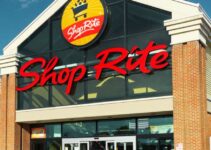Sainsbury’s Plc is a retail chain British supermarket brand. John James Sainsbury founded the retail chain supermarket brand in 1869. The company has established a network of approximately 1442 retail supermarket stores in various countries across the globe. Today, we’ll discuss the supply chain analysis of Sainsbury’s; it focuses on various SCM elements like procurement planning, inventory management, warehousing, automation, transportation, and distribution.
Supply Chain Analysis of Sainsbury’s
Let’s discuss the main elements of the supply chain analysis of Sainsbury’s are as follows;
Sourcing Sustainably
Sainsbury’s is highly careful and cautious about sustainable sourcing and procurement of raw supplies and materials. The retail chain supermarket brand has a strong commitment to the people, planet, customers, and health. The sustainable sourcing and procurement strategic approach helps the company to deliver a positive impact.
- Ensuring the origin of materials and supplies with positive impact on humans and the environment
- Well-developed systems and processes to effectively analyze the impact
- Managing the sourcing practices to ensure their compliance with the legal and regulatory requirements
Sustainable Procurement
Sainsbury’s has made a strong commitment to decrease the carbon emission rate and carbon footprint by 30% in 2030. Sainsbury’s is collaborating with various suppliers and vendors toward achieving its target of a net zero carbon emission rate. In fact, the retail chain supermarket brand is following the pro-nature sustainable business and supply chain strategy comprising of the following;
- Not changing the land and the production area directly or indirectly
- Making sure no deforestation and conversion-free
- Sustainable sourcing of raw materials and supplies
- Sourcing animal-based ingredients from the suppliers to ensure the health and wellbeing of animals
- Complying with human rights standards and ensuring the fair treatment of workers in the supply chain network
- Transparent and visible supply chain network
Tech Integration & Demand Forecasting
Sainsbury’s is upgrading its existing system and tech processes with AI and machine learning ML solutions to improve demand forecasting and stock replenishment capabilities. Blue Yonder is the warehousing software that the company has been using for a very long term and the company has upgraded it with the new on-premise system to improve its SaaS capabilities. However, the new ML technology helps the company to improve demand forecasting automatically and accurately generating the store orders. The tech integration helps the company in the following ways;
- Better and improved inventory and stockholding capabilities
- Transforming the company’s architecture and processes that are easy to comprehend, scale, and facilitate future business changes
- Decreasing the number of key systems to improve the user experience and decrease the technological risks
- Standardized workflow and automated user experience improve overall productivity
Collaborating with Farmers
Sainsbury’s is closely collaborating and coordinating with various farmers for the restoration of renowned cattle breeds. The retail chain supermarket brand has an integrated supply chain with beef and dairy farmers for the growth and nurturing of cattle farmers. It ensures customers that the retail chain brand is paying fair and market-competitive prices to the farmers; with complete transparency and not exploiting the hard work of farmers.
The close collaboration with farmers would help the company to ensure a smooth supply of chicken, beef, pork, and various other top-quality products. It helps the retail chain supermarket brand to promote sustainability and derive demand in the supply chain network.
Suppliers Network and Relationship
Sainsbury’s has established a very large supplier network ranging over 60 countries across the globe. The supermarket chain brand deals with a wide range of suppliers in clothing, food, GM, and various other general merchandising categories. The large and worldwide supplier network and better supplier relationships would help the company to ensure the smooth availability of raw supplies, materials, and products (food, clothing, and others) on time without any delays and disruption.
Transparency Supply Chain Network
Sainsbury’s puts a great emphasis on supply chain transparency, environmental sustainability, ethical sourcing, and addressing social issues. The retail chain brand publishes a long list of suppliers and partners involved in its supply chain network. However, ethical sourcing of raw supplies, and engaging with the right socially and environmentally sustainable practices help the company to build a better brand image.
Logistics and Distributions
Sainsbury’s employs various transportation and 3rdparty logistics service providers for the transportation and distribution of products and goods. The large distribution network plays a key role in delivering raw supplies and materials from the suppliers to the production and manufacturing facilities, packaging units, warehouses, and distribution centers, and then to the retail chain stores and the end consumers of the brand.
Conclusion: Sainsbury’s Supply Chain Analysis | Sainsbury’s Supply Chain Management
After an in-depth study of the supply chain analysis of Sainsbury’s; we have realized that Sainsbury’s is the world’s leading retail chain supermarket brand. If you are learning about Sainsbury’s supply chain analysis; then you should keep in mind the abovementioned SCM elements; procurement, planning, transportation, automation, inventory management, and sortation.
Ahsan is an accomplished researcher and has a deep insight in worldly life affairs. He goes Live 3 days a week on various social media platforms. Other than research writing, he’s a very interesting person.


